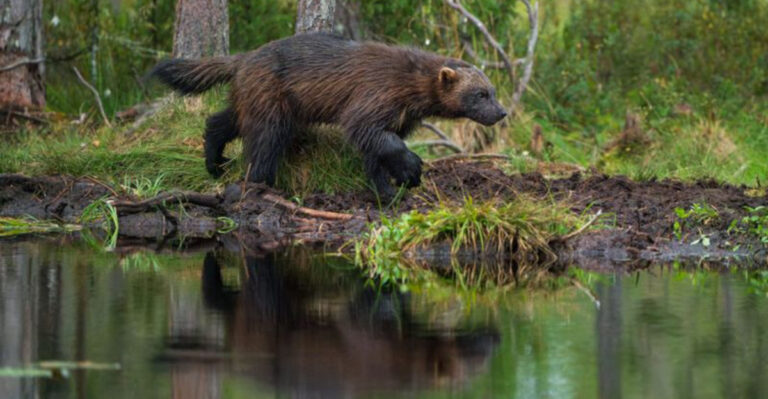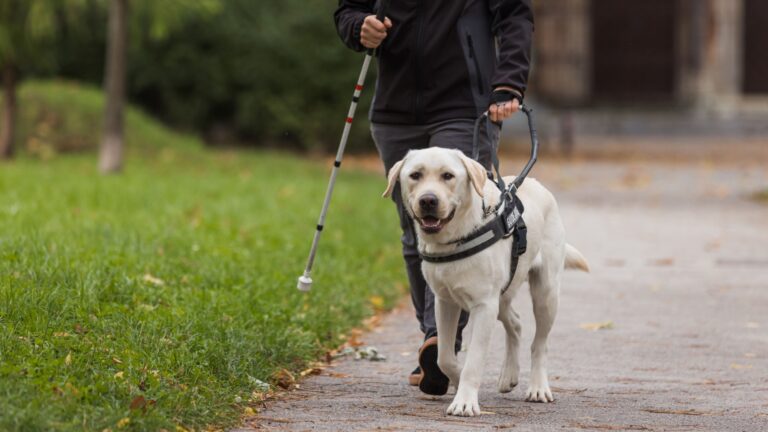13 Essential Steps Every Pet Owner Should Take If A Coyote Enters Your Yard
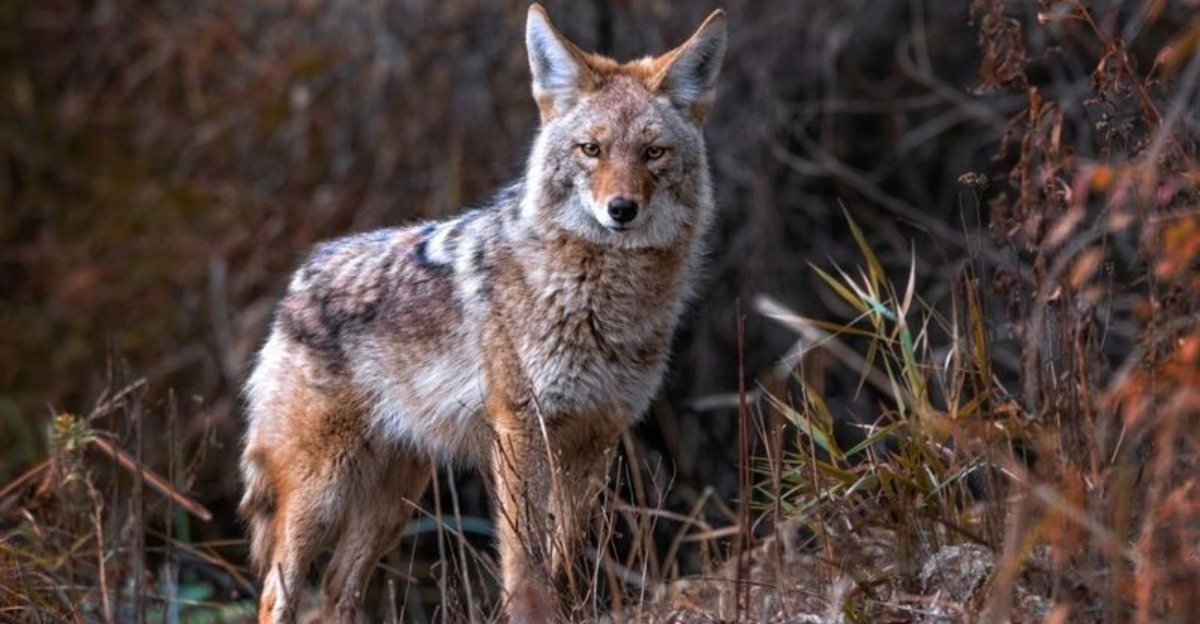
Spotting a coyote in your yard can be terrifying when you have pets. These wild canines are naturally curious and adaptable, often venturing into residential areas in search of food.
Knowing how to respond quickly and effectively could mean the difference between a scary encounter and a tragic one for your furry family members.
1. Stay Calm And Assess The Situation
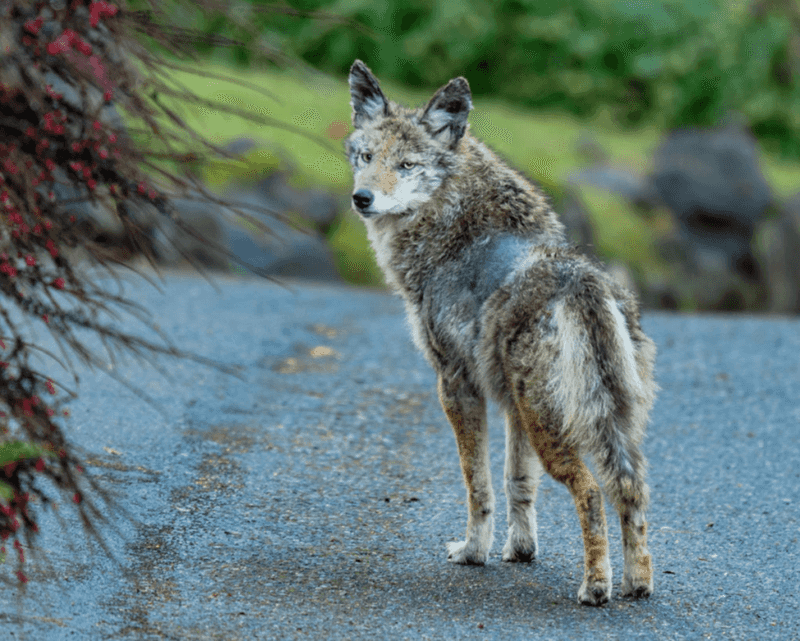
When you spot a coyote, take a deep breath. Panic clouds judgment and might trigger erratic behavior in the animal. Observe from a safe distance to determine if the coyote is just passing through or showing concerning behavior.
Note the coyote’s body language – is it relaxed or aggressive? This information will guide your next actions.
2. Keep Your Pets Indoors Immediately
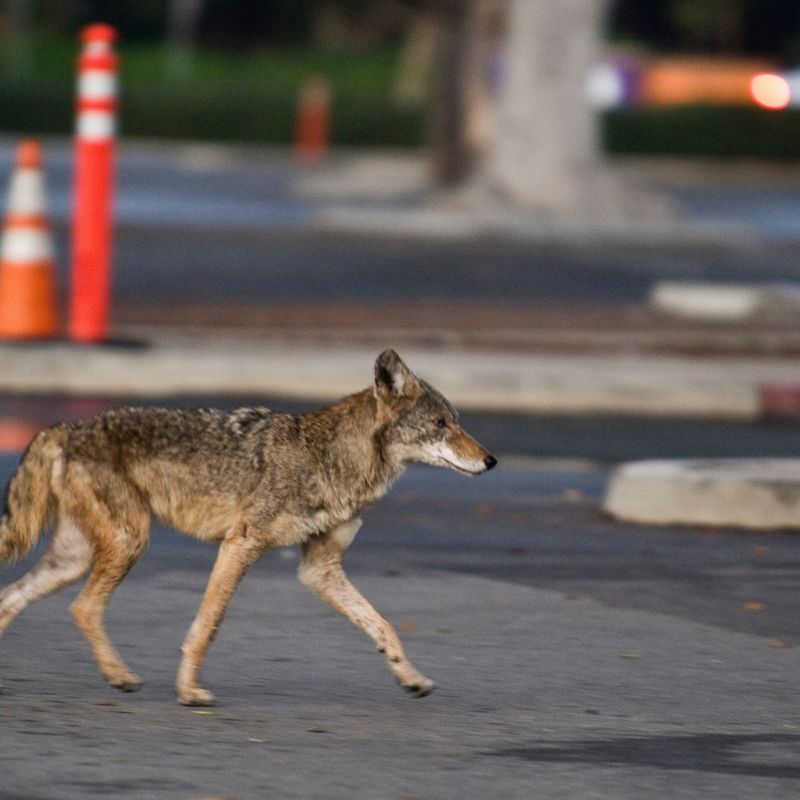
Speed matters! Call your pets inside right away using a firm, calm voice. Coyotes can outrun most domestic animals and view smaller pets as prey.
If your pet is stubborn about coming inside, grab treats to lure them quickly. Don’t chase after pets yourself, as this might trigger the coyote’s predatory instincts.
3. Secure All Pet Food And Trash
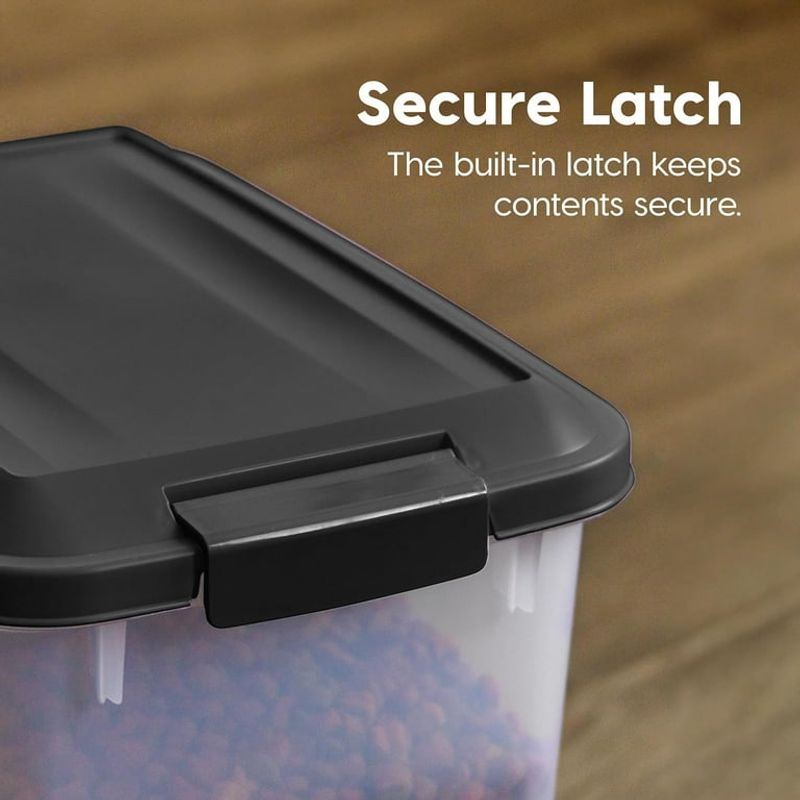
Coyotes have incredible noses that can detect food from surprising distances. Empty pet bowls immediately and bring them inside.
Lock garbage cans with wildlife-proof latches and keep compost in secure bins. A hungry coyote that finds easy meals will return regularly, creating a dangerous pattern for your pets.
4. Remove Bird Feeders And Fallen Fruit
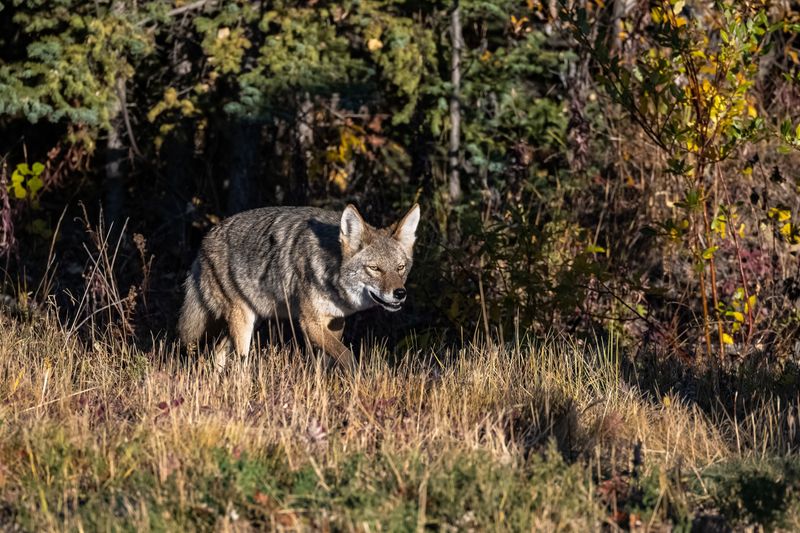
Bird feeders create a buffet that attracts squirrels and rodents – coyote’s natural prey. This indirect food source lures them into your yard repeatedly.
Pick up fallen fruit from trees and bushes right away. Those forgotten apples or berries might seem insignificant to you, but they’re like flashing neon “restaurant” signs to hungry wildlife.
5. Install Motion-Activated Lights Or Sprinklers
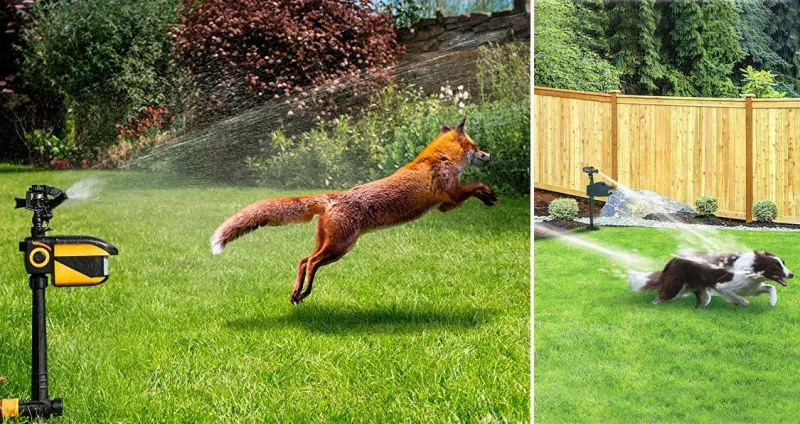
Surprise tactics work wonders against cautious coyotes! Motion-activated lights suddenly flooding the yard can startle them away before they get too comfortable.
Consider installing motion-triggered sprinklers as an extra deterrent. The unexpected spray of water creates an unpleasant experience coyotes won’t want to repeat, keeping your yard off their regular route.
6. Keep Your Yard Well-Lit And Clear Of Hiding Spots
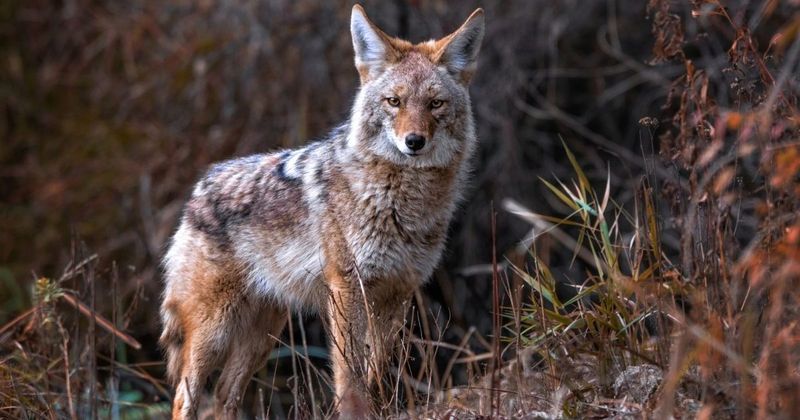
Coyotes prefer the shadows. Installing permanent outdoor lighting makes your yard less appealing as a hunting ground.
Trim tall grass, remove brush piles, and clear spaces under decks or sheds where coyotes might den. Without cover to hide in, these cautious predators will feel too exposed and vulnerable to linger around your property.
7. Use Noise Makers Or Hazing Techniques
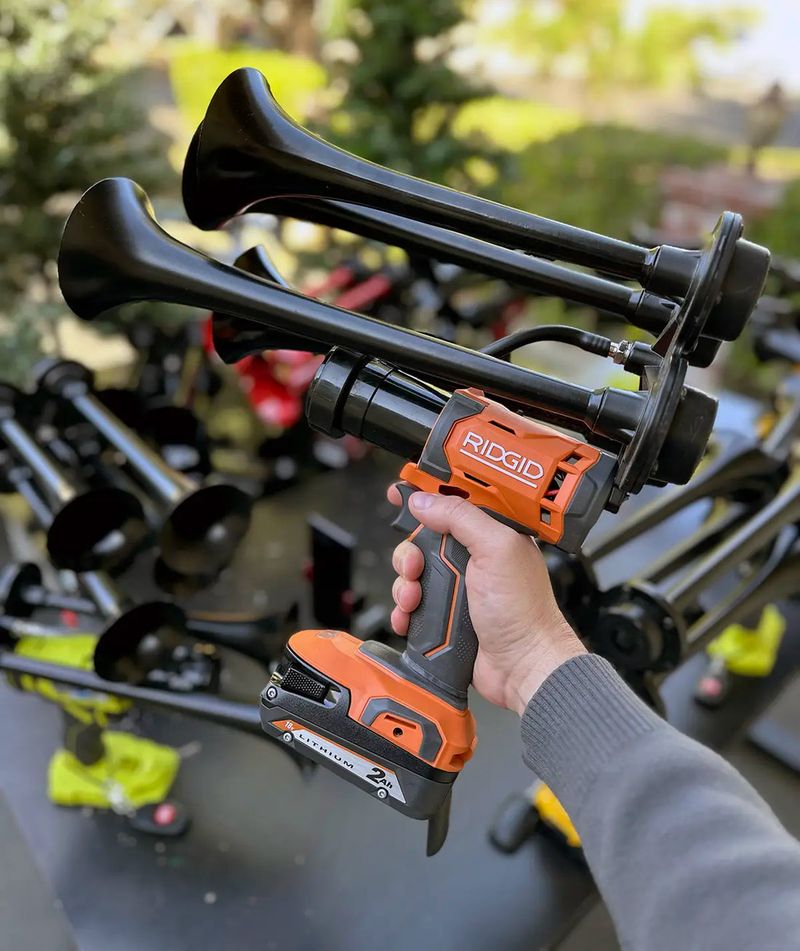
Grab pots and pans to create a loud, startling racket if you spot a coyote. The sudden noise teaches them your yard isn’t a safe, quiet place.
Air horns, whistles, or even just yelling works too. The key is being persistent – don’t stop after one noise. Continue the disruption until the coyote retreats completely from your property.
8. Build Secure Fencing
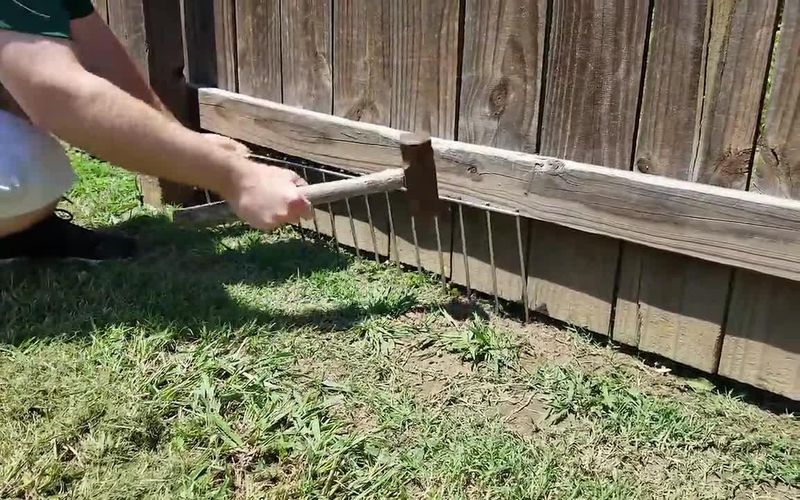
Not all fences are coyote-proof! They can jump barriers under 6 feet tall and squeeze through small gaps.
For maximum protection, install fencing that extends at least 6 inches underground to prevent digging. Add a “coyote roller” cylinder along the top edge that prevents them from getting a grip when attempting to climb over.
9. Supervise Pets When Outside
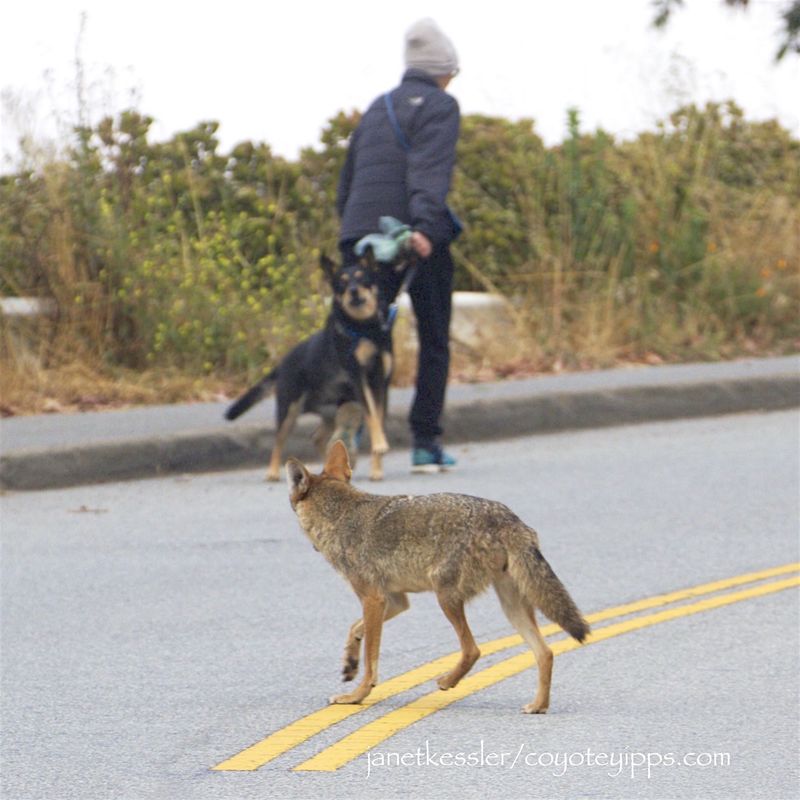
Even with precautions, never leave pets alone outdoors in coyote territory. Smaller animals are particularly vulnerable during dawn and dusk – prime hunting hours.
Carry a flashlight during evening potty breaks, and keep dogs leashed during walks. Your presence alone acts as a powerful deterrent, as coyotes typically avoid direct human confrontation.
10. Educate Neighbors And Build Community Awareness
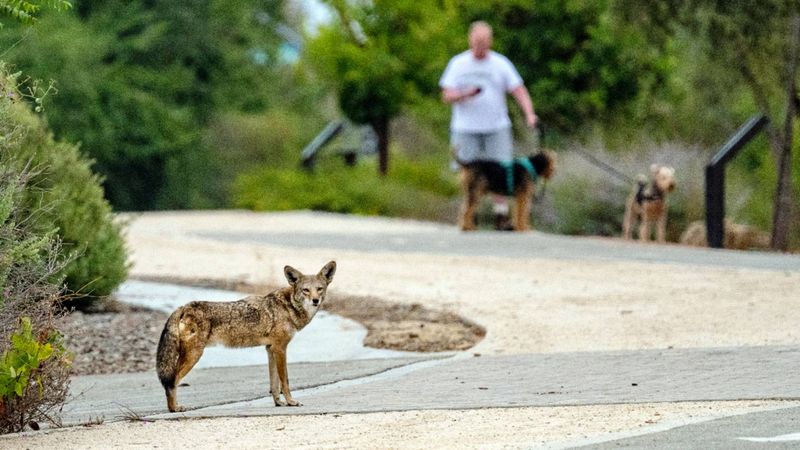
Coyotes don’t recognize property lines! Talk to neighbors about recent sightings and coordinate prevention efforts throughout your community.
Create a neighborhood text alert system for coyote sightings. When everyone follows the same precautions, the entire area becomes less attractive to wildlife, creating a safer zone for all pets in the neighborhood.
11. Avoid Feeding Wildlife
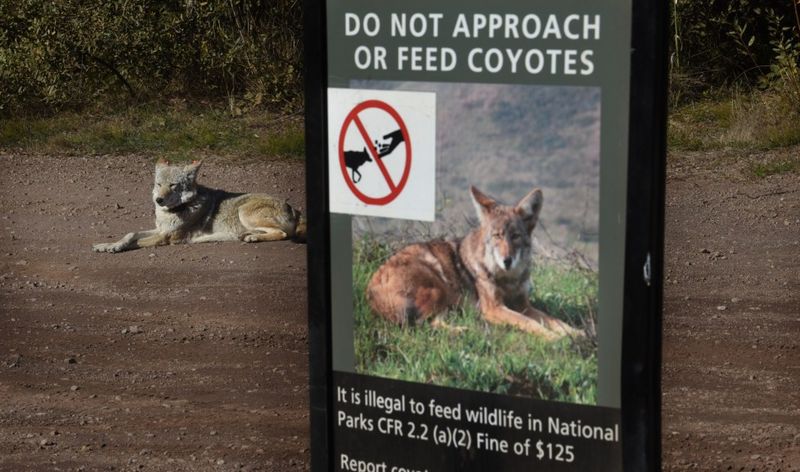
Feeding any wildlife creates dangerous associations between humans and food sources. Coyotes that lose their natural wariness of people become bolder and more likely to approach homes.
Even indirect feeding matters. Unsecured bird seed, accessible compost, or outdoor pet food trains coyotes to view your property as a reliable restaurant worth revisiting again and again.
12. Report Aggressive Coyote Behavior To Authorities
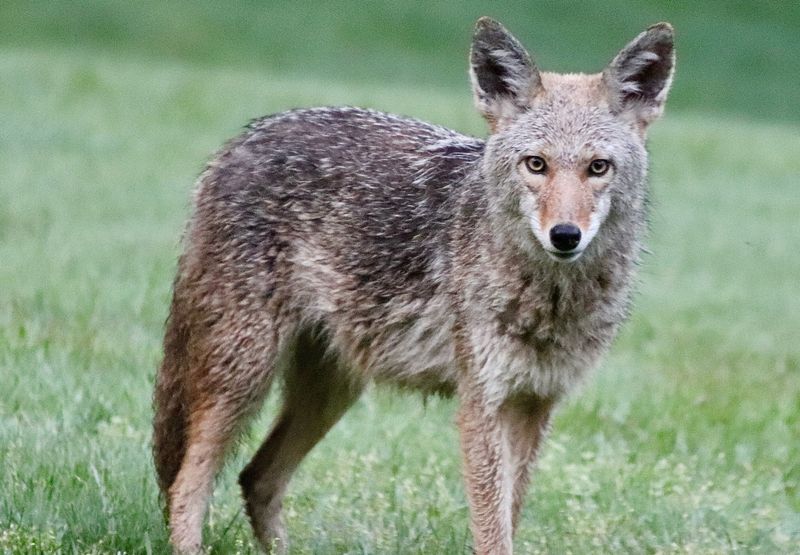
Know the difference between normal and concerning coyote behavior. Natural wariness of humans is typical; approaching people or showing aggression isn’t.
Contact local animal control or wildlife management immediately if you witness a coyote that appears sick, injured, or unusually bold. Many cities have specific protocols for managing wildlife that poses potential public safety risks.
13. Consider Professional Wildlife Removal Services If Needed
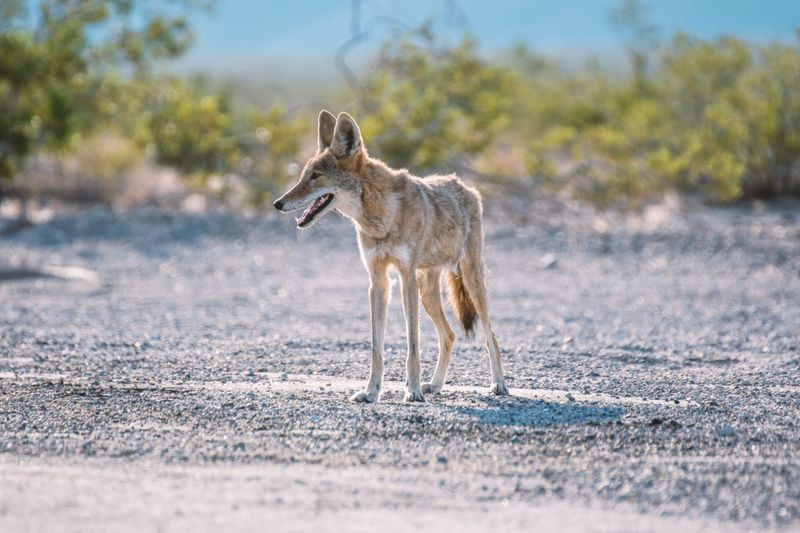
When prevention fails and a coyote repeatedly threatens your pets, professional help may be necessary. Wildlife specialists have humane tools and techniques unavailable to homeowners.
Research companies that prioritize ethical practices and relocation rather than lethal methods. The goal isn’t eliminating coyotes entirely but restoring a healthy boundary between wild predators and your domestic animals.




